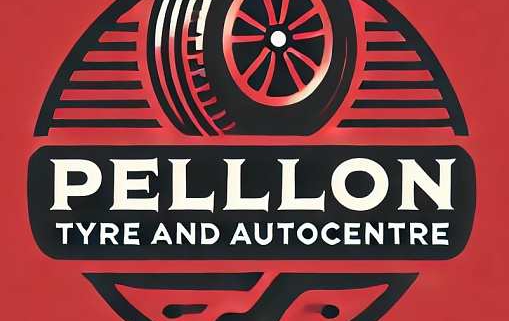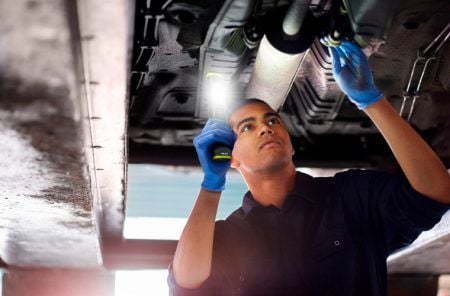Difficulties in Carrying the Correct Stock
Table of Contents
Difficulties in Carrying the Correct Stock

Difficulties in Carrying the Correct Stock
Difficulties in Inventory Management
Stock management presents numerous issues for garage owners in the fast fit sector, despite its significance.
I must confess that this has been a bit of a downfall for me over the years. Early on in my career, I always had an eye for a bargain. I was lucky enough to have a business in the 1970s, when there was always a good deal to be had. These deals came from both wholesalers and tyre manufacturers. It meant, however, buying in quantity and storing until sold.
Profit was the main driving force, and things were good with the British economy growing and more and more workers being able to afford a car. Fluctuations in demand were not a problem until a few years later. I was not afraid of buying a bargain in a growing economy. However, things did change, and a stricter stocking regime had to be adhered to.
Fluctuations in Demand:Difficulties in Carrying the Correct Stock
The demand for automotive parts and supplies can vary greatly due to variables such as seasonal variations, vehicle recalls, and market trends. Accurately forecasting demand poses a challenge, hence complicating the task of maintaining optimal inventory levels. We at Pellon think it is important to keep popular sizes of tyres in stock for the best customer satisfaction.
Restricted Storage Capacity: Numerous garages function within confined areas with a limited ability to store items.This has always been a problem for me, and still is. Fortunately, we are blessed with a Micheldever warehouse just five miles away. Effectively managing inventory under these limitations necessitates meticulous planning and organisation to optimise the utilisation of the limited space.
Supplier Reliability: So, supplier reliability has in fact improved over the past few years. Oak Tyres moved into west Yorkshire, creating more competition amongst tyre wholesalers and thus speeding up more efficient delivery times. Garages should rigorously evaluate suppliers and uphold transparent communication to minimise interruptions in their supply chain.
Obsolete Inventory: The continuous advancement of automotive technology renders certain components and supplies outdated and no longer useful. Garage proprietors should frequently assess and revise their inventory to prevent the accumulation of outdated products that hamper the availability of funds and storage capacity. A strict regime of returning unwanted parts must be a priority for management.
Methods for Resolving Inventory Management Obstacles: Difficulties in Carrying the Correct Stock
Although there are difficulties in managing inventory in the rapid fit industry, garage owners can employ many techniques to overcome these obstacles and attain higher levels of efficiency.In my opinion, this is probably one of the most important things to get right when running a garage or fast-fit centre.
How many garages do we see with un-used stock lying about? Stock control is essential for good cash flow in your business.
Implement Inventory Management Software: Allocate resources towards acquiring inventory management software. We at Pellon use a great system by “Tyresoft” that automates essential tasks such as monitoring inventory levels, producing purchase orders, and analysing sales data. These technologies offer valuable analysis of inventory performance and aid in optimising stock levels.
Implement Just-in-Time Inventory: Difficulties in Carrying the Correct Stock
My personal choice is to utilise a just-in-time (JIT) inventory strategy to minimise the expenses associated with holding inventory and mitigate the possibility of having outdated goods. Garages can optimise their inventory levels by ordering parts and supplies on a just-in-time basis, which allows them to have access to necessary things without excess stock. In addition to this, I recommend a good communication system and relationship with your suppliers.
Expand provider portfolio: It is always a good idea to deal with multiple suppliers if possible, as long as the trading terms are the same or similar. This, of course, spreads the risk, both financially and inventory-wise. As we say, don’t put all your eggs in one basket.”. Mitigate dependence on a sole provider by diversifying your pool of suppliers. Develop connections with various suppliers to have access to a wider variety of items and reduce the likelihood of disruptions from relying on a single source.
Monitor Inventory Turnover: Keep a close eye on the rate at which inventory is being sold to detect goods that are not selling quickly and make necessary adjustments to purchase selections. To optimise inventory efficiency and minimise carrying costs, prioritise the stocking of fast-moving commodities with high turnover rates. A good computer system is necessary for this practice.
Optimise Layout and Organisation: Difficulties in Carrying the Correct Stock
Rearrange inventory storage areas to enhance efficiency and facilitate easy access. Lack of building space can be enhanced by using shipping containers to hold your stock. Utilise shelves, bins, and labelling systems to maintain a well-organized inventory, facilitating easy access and minimising the time and energy needed to seek certain items. Good housekeeping will save you money in the long run.
In conclusion,
Efficient inventory control is crucial for achieving success in the rapid fit segment of the automotive industry. Garage owners may optimise their operations, boost customer happiness, and increase profitability by comprehending the difficulties related to inventory management and using effective tactics to solve them. By employing meticulous planning and proactive management strategies, achieving proficiency in inventory management emerges as a crucial catalyst for success in the fiercely competitive realm of vehicle repair. The busy garages will know what I mean.


